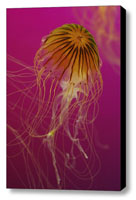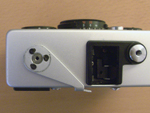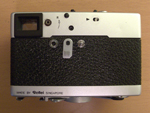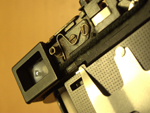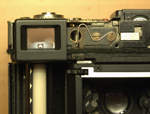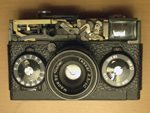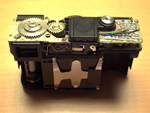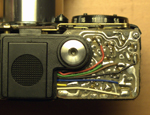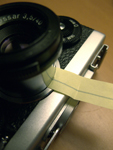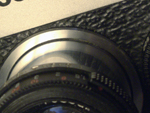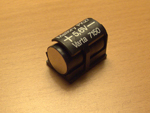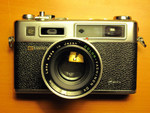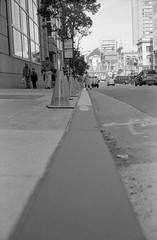
I recently picked up a used Nexstar 6/8 SE mount and tripod with the idea of using it not only as a grab-and-go for my 72mm f/6 Orion EON (and hopefully a 5 or 6″ SCT OTA down the line) but also in the hopes of using it for some lightweight wide-field long-exposure and time-lapse astrophotography.
I wanted to side-by-side mount a DSLR camera and wide-angle lens combo alongside my unused Celestron 9×50 finderscope from my CPC800 and use an Orion Starshoot autoguider attached to the finder to guide the whole contraption for long exposure photos. That this setup can run on batteries and is lightweight enough to chuck in the back of the car for camping trips made this a really interesting camera platform despite the Nexstar’s well known astrophotography limitations.
| |
Side-by-Side Camera/Autoguider MountNext up was finding a sturdy way to mount the finderscope and camera on the Nexstar. From a previous project I had a mounting bar with a center hole tapped for a standard 1/4-20 tripod stud with 4 untapped holes on each side. A couple of bolts and washers from the local hardware store worked to mount the Celestron 9×50 finder mount securely to the bar. To attach the whole thing to the Nexstar, I used the mounting block from the Orion EON 72mm f/6. (Which normally rides piggyback on my CPC800.) The second photo shows the system all set up with the finderscope, Starshoot autoguider and an IR modified Canon 300D. One of the lenses I plan to use with this setup is a Zenitar 16mm fisheye but unfortunately, the finderscope is mounted so far forward that it projects into the Zenitar’s 180 degree field of view. So I’ll either need to crop the resulting images or figure out some way of mounting the camera further forward or the finderscope further back. The last image shows everything attached to the Nexstar SE mount and ready to go. Note that I did have to remove the plastic altitude gear covering for the side-by-side mounting to fit which detracts a bit from the looks but everything still works fine. I love how compact and multi-functional this setup is and can’t wait to get some time out in the field with it. Running with rechargeable batteries for the mount and with spare batteries for the camera and my netbook I think I can get a solid evening of imaging with this setup without ever needing a power plug. The next step was to adapt a cheap, old wedge for the Nexstar | |







